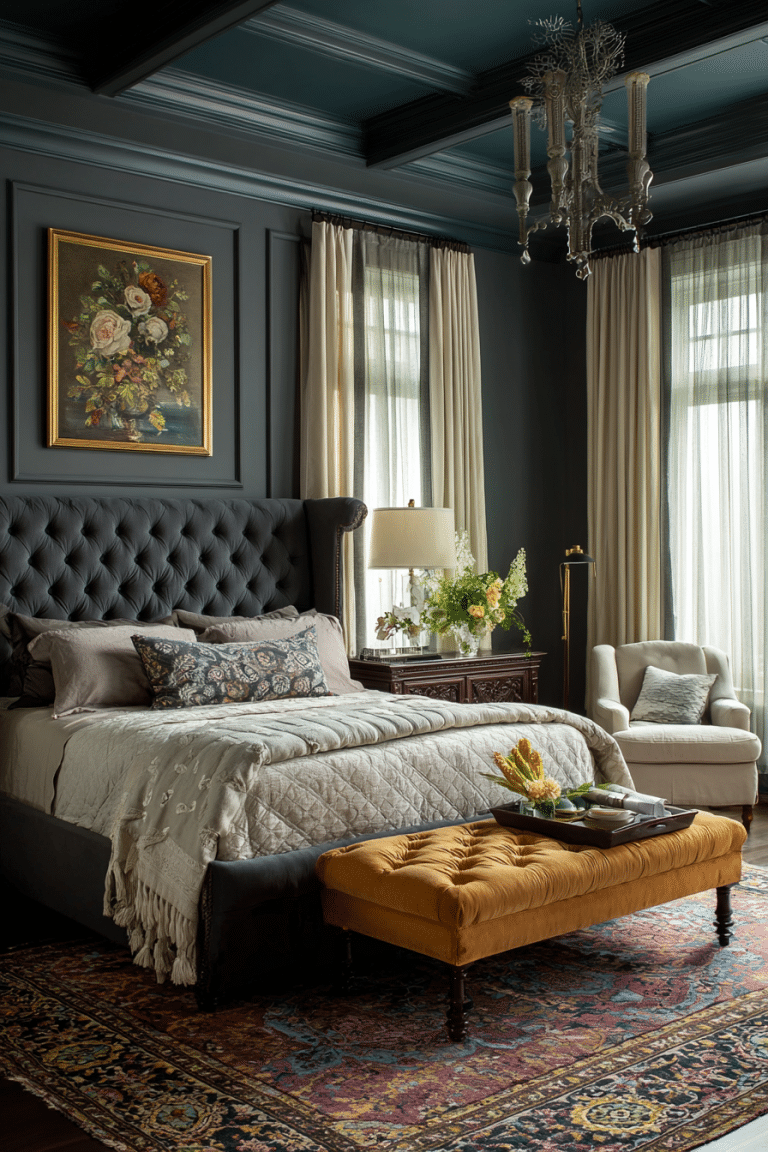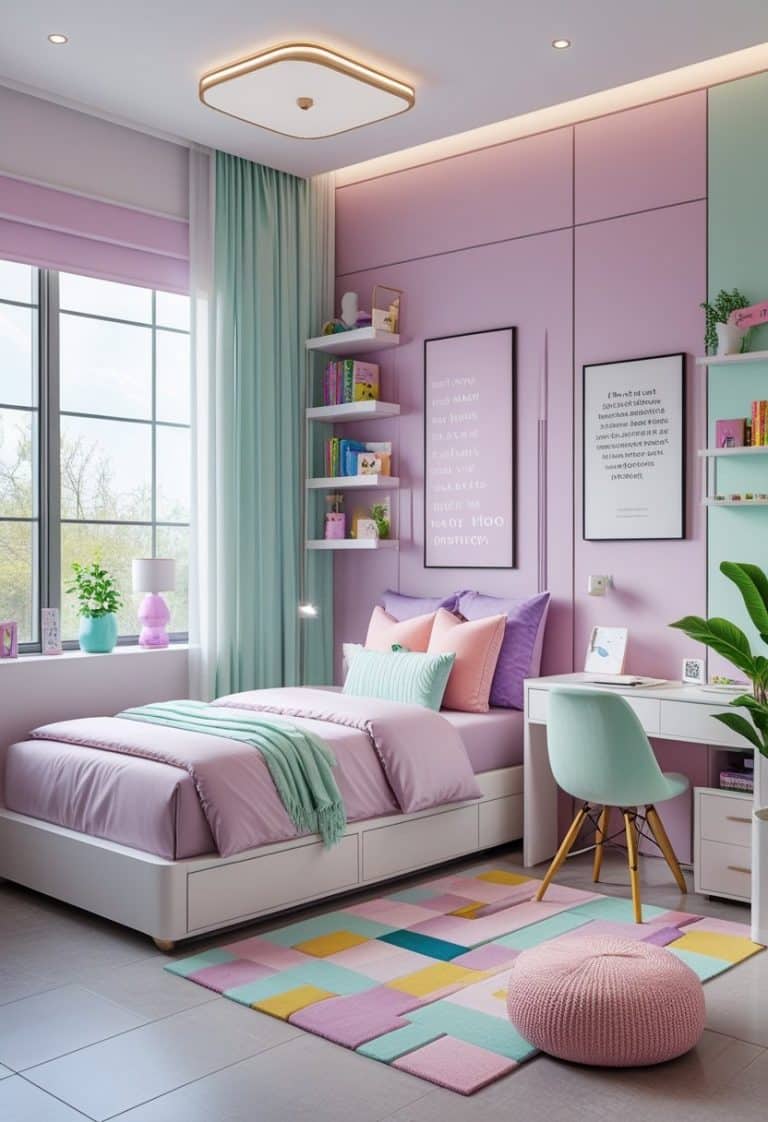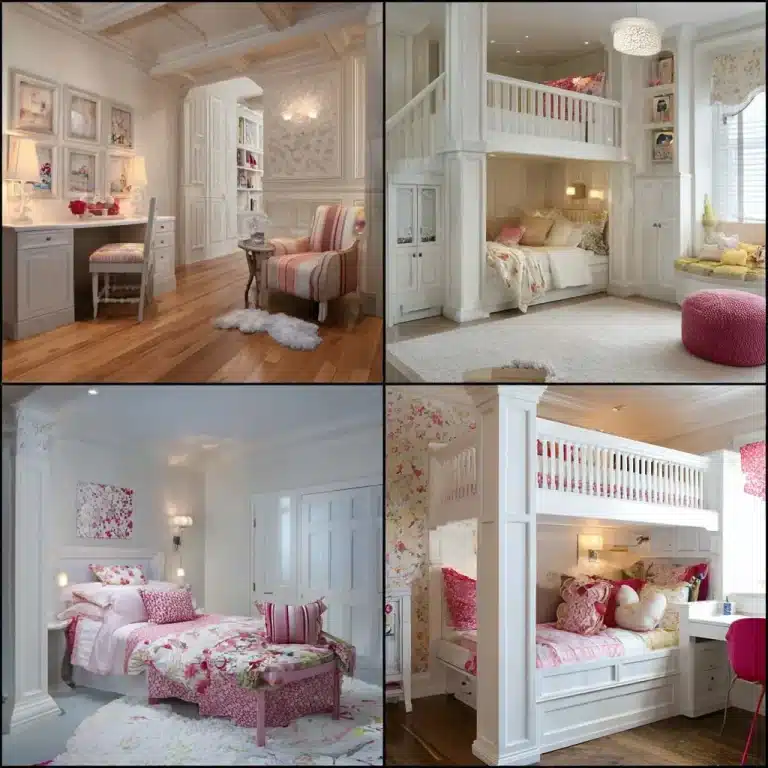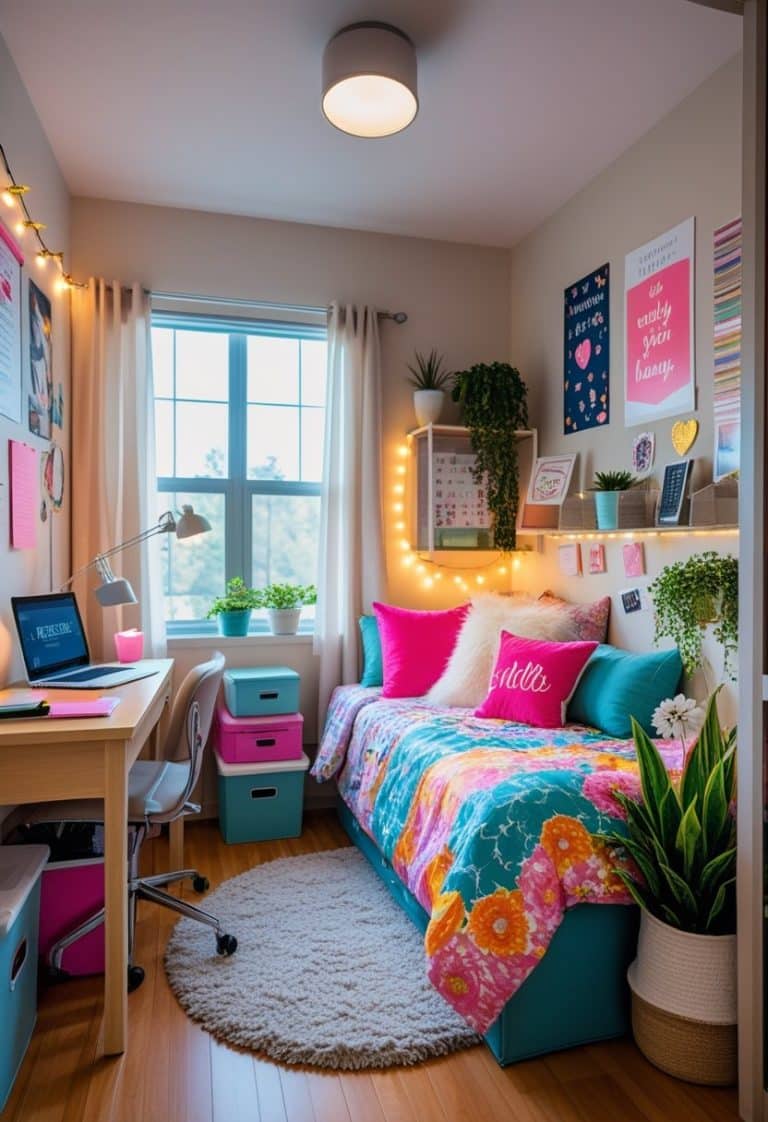Pantone-Like Bedroom Color Trends: 24 Inspiring Shades for Modern Spaces
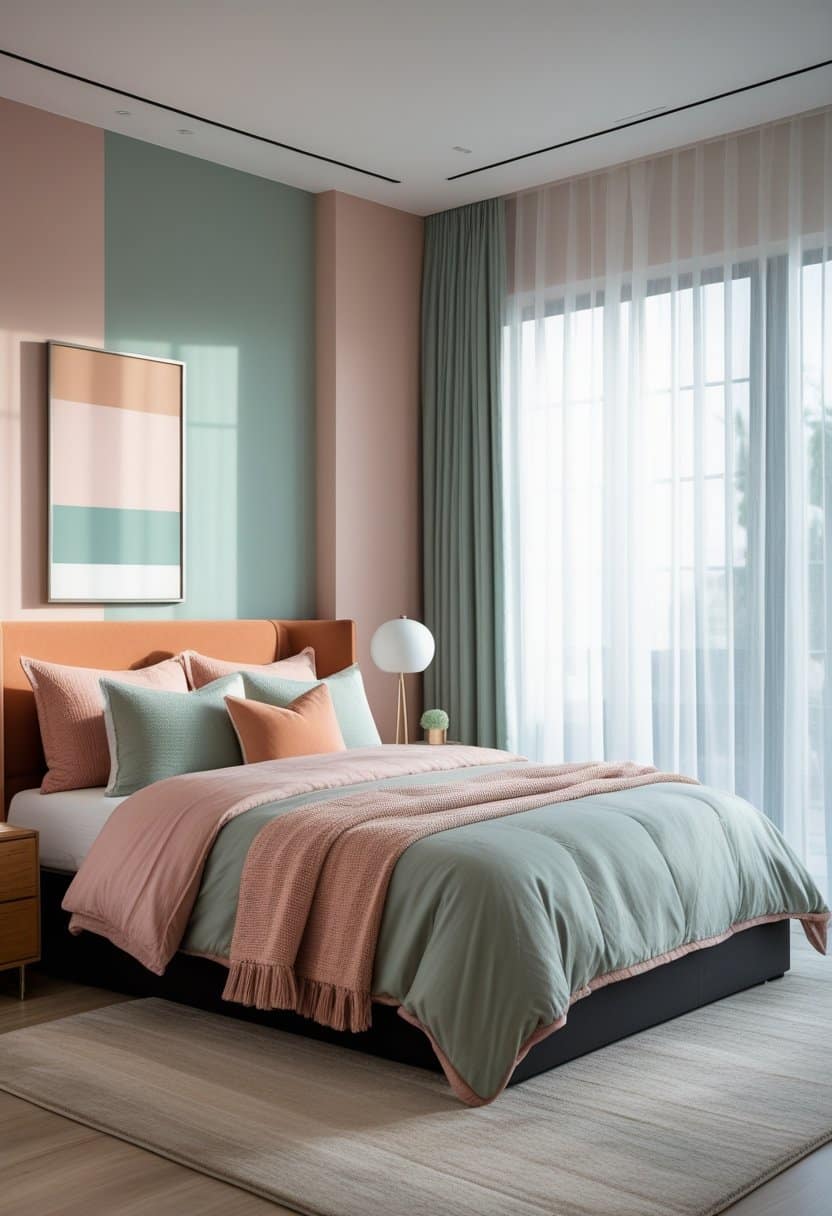
Color trends shape how a bedroom feels, from the mood it sets to the comfort it brings. Each year, new shades gain attention through design forecasts and Pantone-like selections that influence how people decorate their spaces. Understanding these color directions helps anyone create a bedroom that feels both current and personal.

This article introduces the most notable bedroom color trends influenced by Pantone and other design leaders. It explores calming neutrals, bold contrasts, earthy tones, and soft pastels, showing how each palette can transform a space. By the end, it becomes clear how these choices balance style with function in everyday living.
Mocha Mousse – Pantone Color of the Year 2025

Pantone selected Mocha Mousse, a warm mid-tone brown, as the 2025 Color of the Year. It carries subtle mauve undertones that add depth without overwhelming a space.
In bedrooms, this shade creates a calm and grounded look. It pairs well with soft neutrals, natural textures, and muted accent colors.
Warm Earth Tones for Cozy Bedrooms

Warm earth tones create a calm and inviting bedroom atmosphere. Shades like soft browns, muted greens, and sandy beiges reflect natural elements.
These colors work well with wood furniture, woven textiles, and simple decor. They bring a balanced look that feels grounded and comfortable.
Layering Warm and Cool Tones

Designers often mix warm and cool tones to create balance in bedrooms. Warm shades like terracotta or mustard bring energy, while cool tones such as mint or teal add calm.
Layering these colors helps a room feel both inviting and restful without leaning too strongly in one direction.
Soft Pastels for a Calm Atmosphere

Soft pastel shades create a gentle backdrop that reduces visual clutter. Colors like pale blue, blush pink, and mint green bring a sense of quiet to a bedroom.
These tones work well with simple furniture and natural textures. They help the space feel balanced without overwhelming the eye.
Bold Contrasts with Deep Blues and Rust

Deep blue and rust create a strong contrast that feels balanced and grounded. The cool depth of blue pairs well with the warm, earthy tone of rust.
This combination works in bedrooms where both calm and character are desired. It brings richness without overwhelming the space.
Natural Beige and Sand Shades

Beige and sand tones create a calm base that works well in bedrooms. These shades feel warm without being heavy.
Designers often pair sandy beige with natural textures like wood or linen. This adds depth while keeping the space simple.
Layering soft beige tones can make a room feel balanced and inviting.
Muted Greens Inspired by Nature

Muted greens use soft gray, beige, or blue undertones to create a calm look.
They often resemble natural shades like sage leaves or misty forests.
These colors work well in bedrooms, where their subtle tones promote a restful and balanced atmosphere.
Creamy Whites with a Touch of Warmth

Creamy whites add a soft, inviting look that feels balanced in both natural and artificial light.
Designers often choose shades like Benjamin Moore White Dove or Sherwin-Williams White Duck for their subtle warmth without heavy yellow tones.
These colors work well in bedrooms, creating a calm backdrop that pairs easily with wood, textiles, or muted accents.
Dusty Rose Accents for Subtle Elegance

Dusty rose adds a muted touch of color that feels calm and refined. Its soft pink tone with gray undertones works well in both modern and classic bedrooms.
They can use it on accent pillows, throws, or a single wall to bring warmth without overwhelming the space.
Pairing dusty rose with white, gray, or gold creates a balanced and elegant look. Textured fabrics like velvet or linen enhance its depth.
Charcoal Gray for Moody Spaces

Charcoal gray adds depth and balance to a bedroom without feeling overwhelming.
It works well as an accent wall or through furniture and textiles.
Designers value this shade for its versatility, as it pairs with both warm and cool tones.
Terracotta Hues for Rustic Charm

Terracotta brings a warm, earthy tone that pairs well with natural textures like wood and linen.
Designers often use it on walls, textiles, or tiles to create a grounded and inviting feel.
Its muted richness makes it versatile, fitting both rustic and modern bedroom styles.
Olive Green for Organic Vibes

Olive green brings a grounded and natural feel to the bedroom. It connects well with wood furniture, woven textures, and indoor plants.
This shade works as an accent wall or through smaller details like bedding and pillows. It creates a calm, balanced atmosphere without feeling overwhelming.
Sage Green for Relaxing Energy

Sage green creates a calm and balanced atmosphere in bedrooms. Its muted tone works well for those who want a space that feels restful without being dull.
This shade pairs easily with natural textures like wood or linen. It also blends well with neutral colors, making it versatile for many styles.
Warm Taupe as a Neutral Base

Warm taupe works well as a foundation color because it balances both warm and cool tones.
It pairs easily with natural textures like wood and stone, creating a calm and steady backdrop.
Designers often use it on walls or large furniture pieces to anchor a space without overwhelming it.
Burnt Orange for Vibrant Touches

Burnt orange adds warmth and depth to a bedroom without overwhelming the space. It works well as an accent color on bedding, pillows, or rugs.
They can also use it on a feature wall to create a focal point. Paired with neutrals, the shade feels balanced and inviting.
Soft Lavender for Gentle Serenity

Soft lavender creates a calm setting that works well in bedrooms. Its light tone adds softness without overwhelming the space.
They often pair lavender with whites or grays to keep the room balanced. Simple furniture and clean lines let the color remain the focus.
This shade supports a restful atmosphere, making it a practical choice for relaxation.
Deep Burgundy for Sophistication

Deep burgundy adds depth and warmth to a bedroom, making it a strong choice for a refined look.
It works well as an accent wall, bedding color, or through smaller details like curtains and pillows.
Pairing it with neutrals such as cream, gray, or beige creates balance and keeps the space inviting.
Mustard Yellow as a Cheerful Accent

Mustard yellow adds warmth without feeling too bright. It works well on an accent wall, bedding, or small furniture pieces.
The color pairs easily with neutrals like gray, white, or wood tones. This balance keeps the room inviting while letting the yellow stand out.
Blush Pink for Feminine Softness

Blush pink adds a soft, calming touch to bedroom spaces. It works well with both modern and traditional styles.
Many people use it on walls, bedding, or small accents. The color pairs easily with neutrals like gray or white.
Its gentle tone creates a balanced look without feeling overwhelming.
Slate Blue for a Modern Feel

Slate blue blends blue and gray tones, giving bedrooms a balanced and modern look.
It works well with both light and dark furniture, making it flexible for different design styles.
Many choose this shade for its calm appearance while still adding depth to the space.
Rich Chocolate Brown for Depth

Chocolate brown adds warmth and depth to a bedroom without feeling overwhelming.
This earthy tone works well with neutral shades like cream, beige, and gray, creating a balanced look.
Layering textures such as wood, linen, or leather helps the color feel inviting and grounded.
Pale Aqua for Refreshing Coolness

Pale aqua brings a light, calming presence to a bedroom. Its mix of blue and green tones creates a soft, refreshing backdrop.
The shade works well with neutral furniture and natural textures like wood or stone. It adds coolness without feeling too bold or overwhelming.
Rust Red for Earthy Warmth

Rust red brings a grounded and natural feel to bedroom spaces. Its tones range from deep terracotta to burnt orange, offering warmth without being overwhelming.
The color pairs well with neutral shades like beige, cream, or gray. It also complements natural textures such as wood, linen, and stone.
Muted Gold Highlights

Muted gold adds warmth without overpowering a bedroom. It works well as an accent on walls, textiles, or lighting.
Designers often pair muted gold with earthy neutrals or soft jewel tones. This creates a balanced look that feels calm yet refined.
The shade also complements natural wood furniture and simple décor. It lends a subtle touch of sophistication.
Understanding Pantone-Inspired Color Palettes

Pantone-inspired palettes highlight colors chosen for their cultural relevance and design impact. These shades often guide how people combine tones to create balance, mood, and cohesion in a room.
What Makes a Color Pantone-Like
A Pantone-like color is defined by precision and consistency. Unlike broad paint categories, Pantone shades are standardized, meaning the same color looks identical across fabrics, paints, and digital media. This reliability makes them useful for designers who want a unified look.
Pantone-like palettes often include both bold statement tones and softer neutrals. For example, a vibrant coral may be paired with muted beige to create contrast without overwhelming the space. The mix of saturation and subtlety helps maintain harmony.
These palettes usually reflect cultural or seasonal themes. Earthy browns, such as Mocha Mousse (2025’s featured shade), show how natural tones can feel modern and timeless at once. By combining such colors with complementary accents, designers can create spaces that feel both current and grounded.
Key traits of Pantone-like colors:
- Standardized and repeatable
- Balanced between bold and neutral
- Reflective of broader design movements
How Pantone Trends Influence Interior Design
Pantone trends often set the direction for how color appears in interiors. When a new shade is highlighted, it quickly shapes the look of textiles, wall paints, and décor. This influence allows homeowners to stay aligned with current design movements.
Bedrooms often use these palettes to set mood. Softer tones like peach or sage promote calm, while deeper hues such as mocha or navy add sophistication. The chosen shade often acts as a base, with lighter or darker accents layered in through bedding, artwork, or furniture.
Designers use Pantone trends to create cohesion across different elements of a room. A single featured color can tie together walls, textiles, and accessories, making the space feel intentional. This approach helps avoid cluttered or mismatched designs.
By following these palettes, interiors gain a clear visual direction. The result is not trend-chasing but a structured way to use color effectively in everyday spaces.
Practical Tips for Incorporating Pantone-Like Colors

Using Pantone-inspired shades in a bedroom works best when colors are balanced and supported with the right decor. The goal is to create harmony between bold tones and softer neutrals while choosing furnishings and accents that highlight the palette without overwhelming the space.
Balancing Bold and Neutral Tones
Strong colors like Pantone’s Mocha Mousse or Peach Fuzz can set the mood of a room, but they need grounding. Pairing these tones with neutrals such as beige, soft gray, or off-white prevents the space from feeling heavy.
One approach is to use bold shades on a single feature wall or in bedding, then layer neutral tones across furniture and flooring. This keeps the color from dominating while still making it a focal point.
Practical balance ideas:
- Bold wall + neutral curtains and rugs
- Vibrant bedding + muted wood furniture
- Accent chair in a Pantone-like tone + soft white walls
This balance ensures the room feels cohesive and adaptable. It also makes it easier to update colors later without replacing major furniture pieces.
Choosing Complementary Decor
Decor choices can either strengthen or weaken a color scheme. When working with Pantone-like shades, it helps to select decor that picks up subtle undertones of the main color. For example, warm metallics like brass pair well with earthy browns, while light woods or linen fabrics work with softer peach tones.
Textiles such as throw pillows, blankets, and curtains are simple ways to echo the main shade. Artwork can also reinforce the palette by blending the bold color with supporting hues.
Examples of complementary pairings:
| Main Shade | Works Well With |
|---|---|
| Mocha Mousse | Brass, cream, natural wood |
| Peach Fuzz | White, light oak, soft gold |
| Deep Blue Accent | Gray, silver, textured linen |
These choices tie the room together without requiring a full redesign. Small, intentional accents keep the look polished and consistent.

